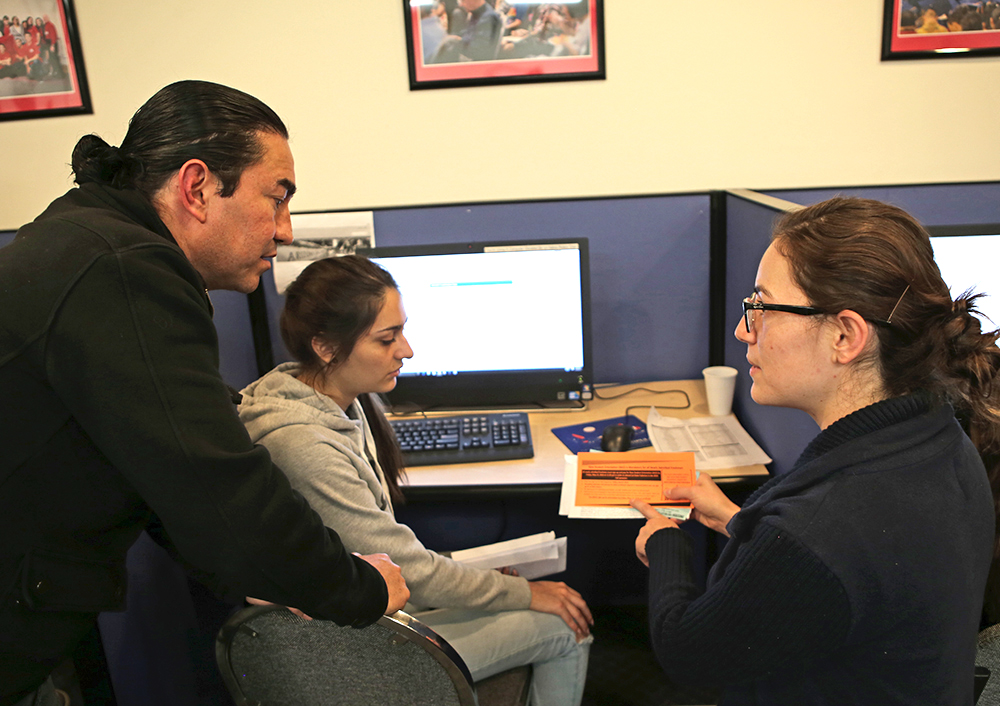
Black teachers: How to recruit them and make them stay

Lessons in higher education: What California can learn

Keeping California public university options open

Superintendents: Well-paid and walking away

The debt to degree connection

College in prison: How earning a degree can lead to a new life

California is better off when more people have education and training to power our economy and support thriving communities. Financial aid that reduces or fully covers the cost of college or job training is an investment that benefits all of us.
About $550 million in federal and state aid goes unused annually when thousands of eligible California students miss out on financial aid. Many are unaware of financial aid, don’t know how to apply or if they qualify, or fear sharing personal information because of their immigration status.
A new law is helping to ensure that financial aid is not left on the table. Schools must help all high school seniors complete the Free Application for Federal Student Aid or California Dream Act Application unless the student formally opts out. Students submit one of these applications, depending on their residential status, to access the grants, scholarships, work-study opportunities, student loans and other forms of aid available to help finance postsecondary education or training.
Providing support for all students as they complete financial aid applications is an equity-driven game changer. This policy encourages students to plan for and attend college or job training programs and ensures that all students and families can make informed plans and decisions about their life after high school.
Achieving universal participation in this student-centered systemic approach to financial aid requires planning and collaboration among K-12 school leaders, counselors, educators, student groups and community organizations. California’s All in for FAFSA/CA Dream Act campaign supports K-12 education partners as they work to achieve universal FAFSA/CADAA completion. Local progress can be tracked on the state’s Race to Submit dashboard. The data can help target assistance for students who may need extra support and encouragement to complete and submit a financial aid application. It also helps us to identify, learn from and share best practices with schools and districts across the state.
Since universal participation was required, the number of California students applying for financial aid increased significantly. More than 60% of California’s high school seniors submitted financial aid applications by March 2, the deadline for students planning to attend a four-year college. By Sept. 5, the deadline for students heading to community college, the total FAFSA or CADAA completion rate for the class of 2023 climbed to nearly 75%. More than 24,000 financial aid applications were completed this year compared with the same time a year ago.
The progress achieved with California’s universal financial aid requirement is due to the hard work of K-12 district leaders, high school principals, counselors and teachers, California Student Opportunity and Access Program counselors, Cash for College workshop coordinators, community-based organizations, and students and their families. They went all in to help more high school students than ever complete financial aid applications.
In a few months, the U.S. Department of Education will release a revised federal aid application called the Better FAFSA. The good news is that the redesigned application will be easier to complete. The bad news is that the Better FAFSA application window will open two months later than in a typical year. This compressed timeline could most disadvantage students and families who need greater support to complete the aid application — and who have the most to gain from filling out the form.
We will need all hands on deck at the state, district and high school levels to keep making progress and ensure that students don’t lose ground in this inaugural year of the Better FAFSA. The California Student Aid Commission will continue to support K-12 districts and high schools as they work to meet the universal FAFSA or CADAA requirement. We have confidence that with planning, collaboration with partners, clear communication and purpose, California can ensure that all high school seniors complete the FAFSA or CADAA, and California’s vision of increasing access to higher education for all students will become a reality.
•••
Catalina Cifuentes is chair and Marlene Garcia is executive director of the California Student Aid Commission.
The opinions expressed in this commentary represent those of the authors. EdSource welcomes commentaries representing diverse points of view. If you would like to submit a commentary, please review our guidelines and contact us.

Panelists discussed dual admission as a solution for easing the longstanding challenges in California’s transfer system.

A grassroots campaign recalled two members of the Orange Unified School District in an election that cost more than half a million dollars.

Legislation that would remove one of the last tests teachers are required to take to earn a credential in California passed the Senate Education Committee.

Part-time instructors, many who work for decades off the tenure track and at a lower pay rate, have been called “apprentices to nowhere.”
Comments
Comments Policy
We welcome your comments. All comments are moderated for civility, relevance and other considerations. Click here for EdSource's Comments Policy.